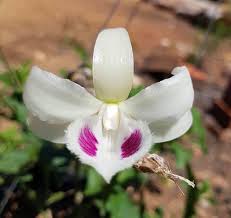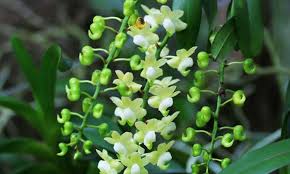
Phi Diep orchids (*Dendrobium anosmum*), celebrated for their stunning blooms and intoxicating fragrance, are a favorite among orchid enthusiasts and casual gardeners alike. While these beautiful plants thrive in various environments, their health and growth can be significantly enhanced by creating an optimal microenvironment in their potting mix. This article will explore the unique characteristics of Phi Diep orchids, the importance of a suitable growing environment, and detailed steps to create and maintain a healthy microenvironment in your potting mix.
—
## Understanding Phi Diep Orchids
### 1.1 Characteristics of Phi Diep Orchids
Phi Diep orchids, native to Southeast Asia, are characterized by their long, arching canes and spectacular flowers that bloom in spring. The blooms can range in color from white to pink and purple, often displaying intricate markings that add to their allure.
Key characteristics include:
– **Growth Habit:** They typically grow as epiphytes, meaning they naturally attach themselves to trees and receive nutrients from the air and rain.
– **Root System:** Their roots are adapted to absorb moisture and nutrients from the environment, making it essential to mimic their natural habitat for optimal growth.
### 1.2 Importance of a Microenvironment
Creating a microenvironment in the potting mix for Phi Diep orchids is crucial for several reasons:
– **Moisture Retention:** A well-structured mix can help retain moisture while ensuring proper drainage, preventing root rot.
– **Nutrient Availability:** The right mix promotes nutrient uptake, enhancing growth and flowering.
– **Airflow:** Proper aeration allows roots to breathe, reducing the risk of fungal infections.
—
## Components of a Suitable Potting Mix
### 2.1 Natural vs. Artificial Components
When creating a potting mix for Phi Diep orchids, you can choose from natural and artificial components:
– **Natural Components:** These include organic materials such as bark, moss, and coconut coir, which mimic the plant’s natural habitat.
– **Artificial Components:** These may include perlite, vermiculite, or specialized orchid potting mixes that enhance drainage and aeration.
### 2.2 Recommended Ingredients
Here are some key ingredients to consider for your Phi Diep orchid potting mix:
– **Orchid Bark:** This is a staple for orchid mixes, providing excellent drainage and aeration. It breaks down slowly, offering a long-lasting substrate.
– **Coconut Coir:** This organic material retains moisture and adds aeration to the mix, promoting a healthy environment for roots.
– **Perlite:** Known for its lightweight and porous nature, perlite improves drainage and prevents compaction.
– **Charcoal:** Adding charcoal helps filter toxins and improve air quality in the potting mix.
—
## Creating the Ideal Potting Mix
### 3.1 Mixing Ingredients
To create a suitable potting mix for your Phi Diep orchids, follow these steps:
1. **Gather Ingredients:** Use a mix of orchid bark, coconut coir, perlite, and charcoal in a clean container.
2. **Proportions:** Aim for a mix of about 50% orchid bark, 30% coconut coir, 10% perlite, and 10% charcoal. Adjust these proportions based on your local climate and humidity levels.
3. **Combine Thoroughly:** Mix the ingredients well to ensure even distribution of moisture-retaining and draining components.
### 3.2 Testing pH Levels
Phi Diep orchids thrive in slightly acidic conditions, with an ideal pH range of 5.5 to 6.5. Testing the pH of your potting mix is essential:
– **Use a pH Tester:** You can purchase a soil pH tester to measure the acidity of your mix.
– **Adjusting pH:** If the pH is too high, adding organic materials like pine bark can help lower it.
—
## Potting Your Phi Diep Orchid
### 4.1 Choosing the Right Pot
Selecting an appropriate pot is vital for creating a suitable microenvironment:
– **Material:** Choose pots made from materials that allow for good airflow, such as clay or wood. Plastic pots can be used if they have adequate drainage holes.
– **Size:** Ensure the pot is not too large, as excess media can retain moisture, leading to root rot.
### 4.2 Potting Process
Once you have your potting mix ready, follow these steps to pot your Phi Diep orchid:
1. **Prepare the Pot:** Ensure that the pot has drainage holes. If using a clay pot, soak it in water for a few hours before potting to prevent it from drawing moisture away from the roots.
2. **Layering:** Place a layer of coarse material (like small stones or gravel) at the bottom of the pot to improve drainage.
3. **Positioning the Orchid:** Carefully remove the orchid from its previous pot, gently untangle any roots if necessary. Position the orchid in the new pot, ensuring that the roots spread out comfortably.
4. **Adding Potting Mix:** Fill in the gaps with your prepared potting mix, gently tapping the pot to settle the media without compacting it too much. The orchid should be secured but not buried too deep.
5. **Watering:** Water thoroughly after potting to help settle the mix and remove any air pockets. Ensure that excess water drains out.
—
## Maintaining the Microenvironment
### 5.1 Watering Techniques
Proper watering is essential for maintaining the microenvironment in your potting mix:
– **Watering Frequency:** Water when the top inch of the mix feels dry. This may vary based on climate, so adjust accordingly.
– **Soaking Method:** Soak the pot in water for about 30 minutes to allow the mix to absorb moisture evenly, then let it drain thoroughly.
### 5.2 Fertilization
Providing nutrients is key to promoting healthy growth:
– **Fertilizer Type:** Use a balanced orchid fertilizer, typically high in phosphorus during the growing season to encourage blooming.
– **Frequency:** Fertilize every 4-6 weeks during the growing season and reduce frequency during dormancy.
### 5.3 Humidity Control
Maintaining humidity levels is vital for the health of your Phi Diep orchids:
– **Humidity Levels:** Aim for humidity between 50% and 70%. Using a humidifier or placing a tray of water near your plants can help.
– **Misting:** Lightly misting the foliage can help maintain humidity, but avoid overdoing it, as excessive moisture on leaves can lead to fungal issues.
—
## Environmental Factors Affecting Growth
### 6.1 Temperature
Temperature plays a significant role in the growth of Phi Diep orchids:
– **Ideal Range:** Aim for daytime temperatures between 65°F and 85°F (18°C – 29°C) and slightly cooler at night.
– **Seasonal Adjustments:** Monitor temperatures closely during seasonal changes, and take steps to mitigate extreme temperature fluctuations.
### 6.2 Light Requirements
Proper light exposure is crucial for promoting healthy growth:
– **Indirect Light:** Phi Diep orchids prefer bright, indirect light. Too much direct sunlight can scorch the leaves, while too little can hinder growth.
– **Light Duration:** Provide 10-12 hours of light daily. Consider using grow lights if natural light is insufficient.
—
## Troubleshooting Common Issues
### 7.1 Root Rot
Root rot is one of the most common issues faced by orchid growers:
– **Symptoms:** Look for yellowing leaves, a mushy texture in the roots, or a foul odor coming from the pot.
– **Prevention:** Ensure proper drainage and avoid overwatering. Use a well-draining potting mix and water only when necessary.
### 7.2 Pest Infestations
Pests can adversely affect the health of your orchids:
– **Common Pests:** Aphids, mealybugs, and spider mites can infest orchids. Regularly inspect your plants for signs of pests.
– **Treatment:** Use insecticidal soap or neem oil to treat infestations, and maintain good air circulation to deter pests.
### 7.3 Nutrient Deficiencies
Signs of nutrient deficiencies can often be mistaken for other issues:
– **Symptoms:** Yellowing leaves, stunted growth, or poor flowering can indicate a lack of essential nutrients.
– **Solution:** Regularly fertilize your orchids and consider testing the potting mix to ensure proper nutrient levels.
—
## Creating a Sustainable Microenvironment
### 8.1 Organic Practices
Incorporating organic practices can enhance the sustainability of your orchid care:
– **Compost:** Use compost to enrich your potting mix with natural nutrients. This can improve soil health and promote beneficial microorganisms.
– **Natural Pest Control:** Consider introducing beneficial insects, such as ladybugs, to manage pest populations naturally.
### 8.2 Companion Planting
Companion planting can enhance the health of your orchids:
– **Choosing Companions:** Planting smaller epiphytic orchids or moisture-loving plants can help maintain humidity and improve the overall aesthetic.
– **Natural Benefits:** Certain companion plants can deter pests and improve soil health.
—
## Seasonal Care for Phi Diep Orchids
### 9.1 Spring and Summer
Spring and summer are active growth periods for Phi Diep orchids:
– **Increased Watering:** During these months, increase watering and fertilization to support growth.
– **Pest Monitoring:** Be vigilant for pests, as warmer weather can lead to higher pest activity.
### 9.2 Fall and Winter
As the seasons change, so should your care routine:
– **Reduced Watering:** Cut back on watering and fertilization during the dormant season to mimic the orchid’s natural cycle.
– **Temperature Control:** Ensure your orchids are kept in a warm, stable environment, especially during cold winter months.
—
## Conclusion
Creating a suitable microenvironment in the
potting mix for Phi Diep orchids is essential for their health and vitality. By understanding the specific needs of these beautiful plants and providing the right conditions, you can enjoy their stunning blooms for years to come. With careful attention to your potting mix and growing environment, you will be well on your way to becoming a successful Phi Diep orchid cultivator, bringing beauty and serenity into your home or garden.
Embrace the journey of caring for your Phi Diep orchids, and let their beauty inspire your gardening passion. As you nurture these exquisite plants, you will gain not only aesthetic pleasure but also a deeper understanding of the art and science of orchid cultivation.


